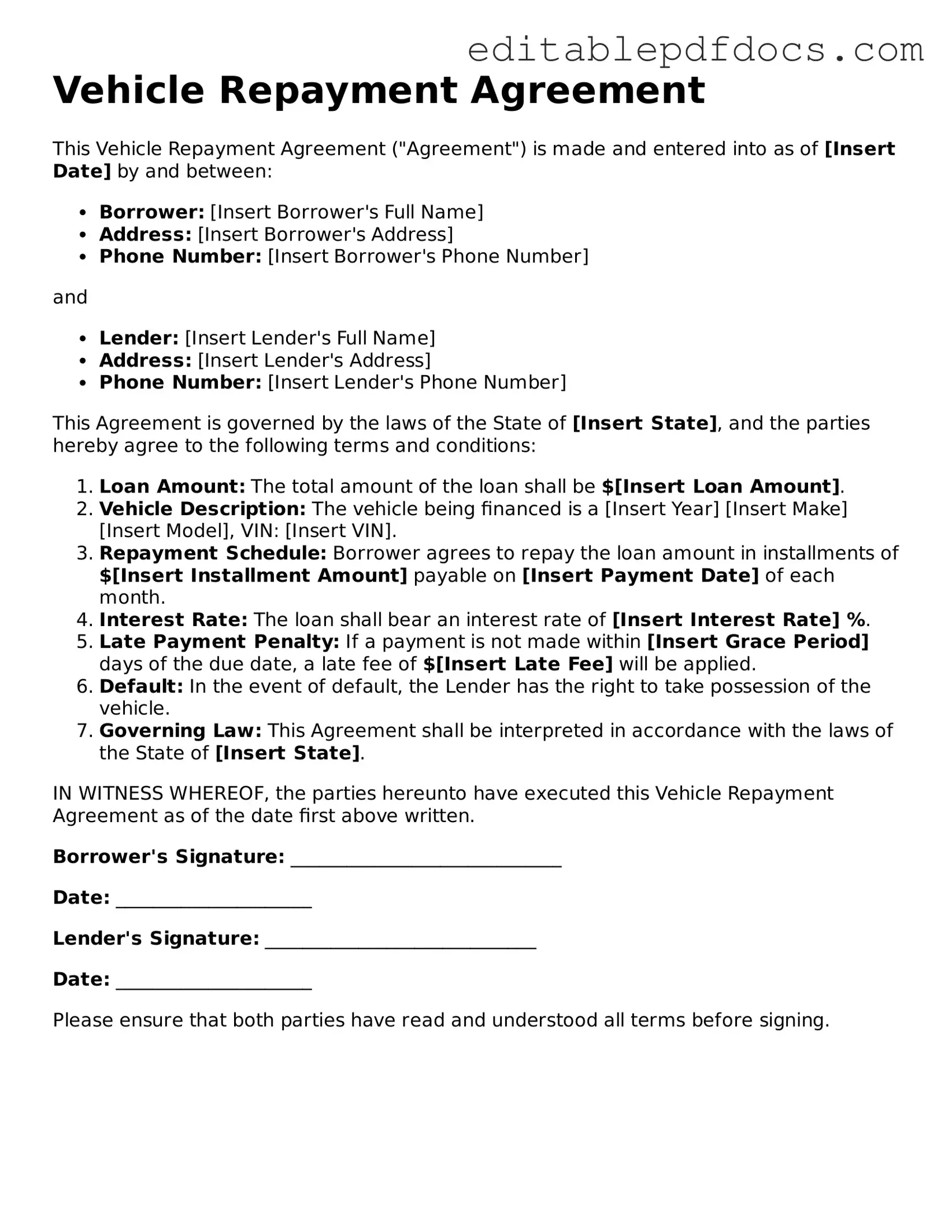Filling out the Vehicle Repayment Agreement form can be straightforward, but many individuals make common mistakes that can lead to complications. One frequent error is providing inaccurate personal information. This includes misspellings of names, incorrect addresses, or wrong contact numbers. Such inaccuracies can delay processing and create issues in communication.
Another mistake involves the failure to read the terms and conditions carefully. Many people rush through the form, overlooking important details. This can result in misunderstandings about payment schedules, interest rates, or penalties for late payments. It is crucial to understand the obligations before signing the agreement.
In addition, individuals often neglect to include all required documentation. The Vehicle Repayment Agreement form may require proof of income, identification, or vehicle ownership documents. Failing to attach these documents can lead to delays or even rejection of the application.
Some people also make the mistake of not double-checking their calculations. When it comes to payment amounts, interest rates, and total repayment sums, accuracy is essential. Errors in calculations can lead to incorrect payment amounts, which may result in financial strain or default.
Another common oversight is not signing the form. While it may seem obvious, many individuals forget to provide their signature, rendering the agreement invalid. A signature is a critical part of the process, as it indicates consent and understanding of the terms.
Finally, individuals sometimes fail to keep a copy of the completed form. This can create problems if there are disputes or if clarification is needed later. Retaining a copy ensures that individuals have a reference point for their agreement and can help resolve any potential issues that arise.
